Sixties
City presents
a wide-ranging series of
articles on all aspects of the Sixties, penned by the creator of the iconic
60s music paper Mersey
Beat
|
Sixties
City presents
a wide-ranging series of
articles on all aspects of the Sixties, penned by the creator of the iconic
60s music paper Mersey
Beat
|
|||||
|
| Roy
told me: "Back in 2000, a TV presenter called Tony Barnes phoned to ask
me if I would agree to an interview for a television series he was working
on, which was to be about the night life in the North West from the 1950's
onwards and was to be called 'Mean Streets'. There would be five or six
episodes. I asked how he came to ask me to become involved and he told me it had followed an interview with Albert Kirby, (a high-profile detective who had handled top-end criminals: he headed the investigation into the murder of the toddler James Bulger, which was worldwide news). Tony had mentioned that he wanted to interview someone who knew a lot about night clubs and Albert said, 'the man you need to interview is Roy Adams. He's had years as a bouncer in clubs and dance halls. He's smart and popular and not a villain!' Tony turned up at my house with a cameraman and did a lengthy interview, which became part of the programme". "He'd asked me for some photos which the cameraman laid on the table and filmed. I was surprised at how well they came out on the film. The programme was very successful, and Tony contacted me again to tell me he was following it up with a book, also to be called 'Mean Streets', and I was featured in it. After all this I said to Tony, 'have you ever considered writing a book about doormen from the 1950s and 1960s', but he told me he had too much on already. I thought about it and recalled that when I told a story, people were always saying, 'you should write a book, Roy.' Tony contacted his publisher for me: Peter Walsh of Milo Books." "Peter then phoned me and said, 'I believe you knew Terry O'Neil.' I said, 'I certainly do - he's just left my house, we're good friends'. He then asked, 'can you get me an interview with him and some of these other characters you know?' I said I'd find out. I put the phone down and thought 'that settles it; I'll have a go myself'. I bought one of the small hand-held recorders and started talking into it". "At the end of the first tape recording, I decided to start writing. I'd switch it on and start writing down what I'd said. The problem was I'd have to switch it off after every couple of sentences so that I could catch up! I thought 'why am I wasting time and effort recording and then writing what I've said? So I started writing without the recorder. I simply wrote as if I was writing a conversation, it was so much easier. After about eight weeks Peter Walsh asked me to send him what I'd written and, a few days later, he arrived at my house with the manuscript. He'd driven all the way from Lytham and told me 'I really like what you've written and I want to publish it'." "He gave me £2,000 to show he meant what he said and I carried on with my writing, keeping him up to date. I eventually finished it and sent it to him, and he phoned me a couple of weeks later to say, 'It's very good but it needs bulking out a bit'. I told him I didn't want a ghost writer, but he said 'I'm not talking about a ghost writer; it's just a case of making it more descriptive'." |
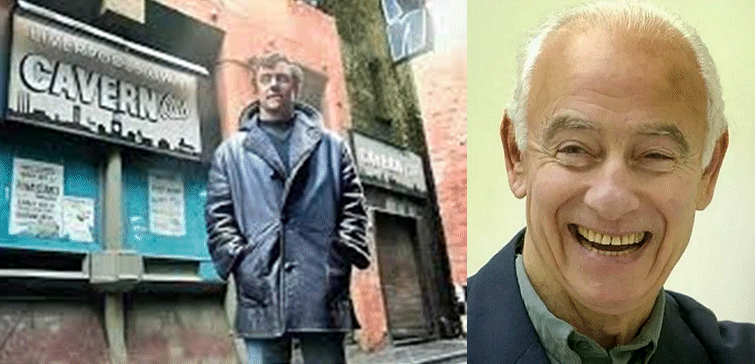 |
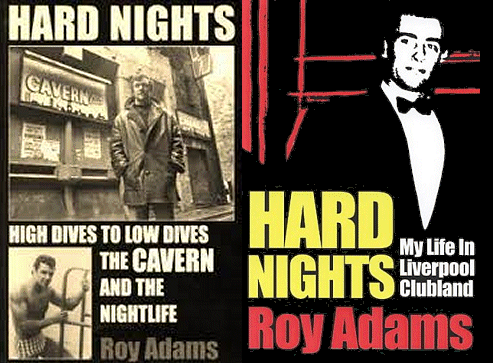 |
"He
sent a chap to my house who sat opposite me at the table and started to
ask me questions about the subjects I'd mentioned in the first chapter (he
was holding a tape recorder while we spoke). He sent me a copy of what he'd
written and it was miles away from what I'd said. In fact, I did ask him
why he was re-writing what I'd written. It turned out that he'd written
a load of fiction, nothing to do with my biography. This went on for weeks
- the first chapter he'd written was four times longer than what I'd originally
written. He described fights which I'd supposedly had which were non-existent." "I contacted the publisher to complain about all the fiction he'd come up with. Peter Walsh only published fact, he had no interest in works of fiction, so he dismissed the chap he'd taken on. As it turned out, he'd paid him several thousand pounds which he had to write off!" "He told me to carry on writing saying he was confident in my ability. However, he pointed out certain chapters he wanted to eliminate or cut back on e.g. my boyhood during the war, my time with Prince Cox's Circus, some of my experiences in the Brigade of Guards and my two and a half years in the Tower of London. He wanted to focus on the villains and the night clubs and asked me to cut out various stories. I disagreed and paid back the initial money he'd given me. Peter agreed that I should self-publish, which I did. Writing that biography was one of the best things I've done. The book is also a great source for my memory. Things I struggle to remember I always find in my book." Roy Adams is a former guardsman and amateur wrestler who became a bouncer in Liverpool clubs such as The Basement and The Cavern for eight years before owning his own clubs, including The Cavern itself. A 'bouncer' is a club doorman and you had to be tough to take the job on. As Roy recalled in one incident, "I stooped down to fasten my shoelace hearing a thud as I started to bend forward. I looked behind me and there was a large triangle of glass with the point buried in the door just where my head had been. As I realised it, another shard of glass just missed my face. Next thing pieces of glass were flying at us. Two of the crowd we'd knocked back had dragged a large cardboard box full of broken panes of glass from a rubbish skip down the street. They'd hidden behind a parked car. We managed to scramble inside but not before I'd been caught in the leg and my colleague had a gash in his hand. This was my first experience of the Liverpool determination for revenge when they feel rebuffed." Roy's experiences of working during Liverpool's nightlife in clubs, ballrooms, nightclubs and restaurants for 42 years before his retirement in the year 2000 is contained in his self-published autobiography, 'Hard Nights'. I particularly remember a tough nut called Eddie Palmer. The first time I met him he made some sort of insulting remark and I told him where to get off. He seemed to like that and apparently looked on me as if I was a friend. I never had any trouble from him, but I remember other people were terrified. I often wondered what had happened to him and found out in Roy's book. He relates that a doorman called Beech Doherty had a nasty run-in with some Scots who threatened revenge. He was then deliberately run down by a car and his legs were so seriously injured it was thought he would never walk again. He eventually recovered and regained the use of his legs, although he walked with difficulty. Doherty was told that Palmer had been paid to drive the car. When he was with his wife and daughter at the Peel Labour Club one night, Palmer came to the table and made some insulting remarks about Beech's wife and daughter. Beech followed him out of the club and stabbed him in the chest, killing him. |
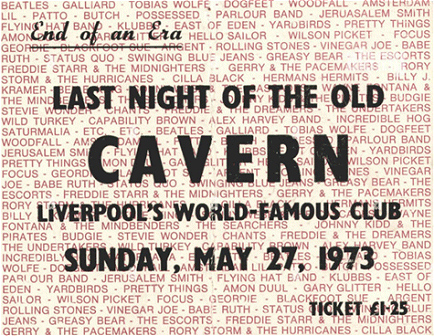 |
There
are other stories which picture the tough scene in which gangsters and villains
abounded, including the time the Krays thought they could come to Liverpool
and begin a protection racket. Roy had been tipped off that London gangsters
were coming to Liverpool to start a protection racket. Initially, Reggie
Kray and a group of men came to Liverpool and went to The Cabaret Club.
The owner told them it was his territory and he wouldn't let any out-of-towners
take over - and several of his men escorted Kray and company to the station.
At The Blue Angel one night, in came a group of men, one called Tank 'who was as wide as he was high', with Reggie Kray, one of the Nash Brothers, Dave Scott, Eric Mason and a few others. A number of local hard cases were at the bar and one of them walked over and ripped one of the beer pumps out. One of the bouncers was asked to throw him out. He turned to a colleague and asked him do it." "Another hard man, Davy Chand, entered and they asked him if he would throw the man out. He went to the group and asked one of them, Tommy McDonald, if he would take his friends and leave. McDonald pulled out a gun and hit him over the head with it. Davy then head-butted him and a big fight started which spilled into Seel Street and the surrounding streets. As Roy described it: "The fight got really heavy, ears and noses getting bitten off in the process. The police arrived and closed off Berry Street and Seel Street. They called in the fire brigade who were looking for bits of ears, noses etc. The Kray lot never interfered, they just stood and watched…..Two enormous policemen arrived in trilby hats." "One was detective inspector John Ralphson. He went over to the Kray crowd and said to Reggie Kray: 'I want a word.' They went into a telephone booth at the club and Ralphson produced a gun saying, 'If you don't get out of town I'll blow your head off.' Later someone commented, 'There'll never be a protection racket in Liverpool'. When he was asked why, he said 'How can you run a protection racket in a town where when you pull a gun on someone they head butt you!" |
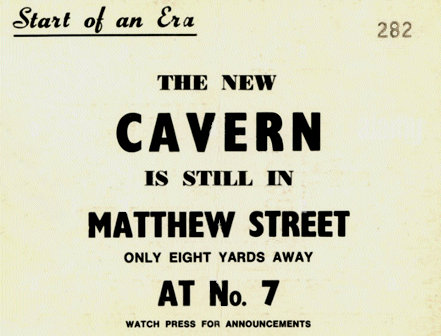 |
| Roy
became a doorman for Yankel Feather at his Basement club. He recalled his
friend, John Chase from Liverpool College of Art, was the barman: "He ran
the little bar with one of Yankel's sisters, Nellie. I, of course, manned
the door. Yankel's other sister, Sarah, ran the food counter and looked
after the record player, which was at the rear of the counter. Yankel had
painted the brick walls in sort of geometric, almost Moroccan-style shapes.
He'd used oddments of furniture, including a couple of old sofas, and all
in all the entire place had a great atmosphere with a mixed clientele: artists,
pop groups, university professors and comedians - a sort of upmarket hippie
place. My job was to keep up the standard of clientele. The lavatories were
in the back yard, so I was constantly opening the door, not just to people
arriving, but also to use the lavatories." He was also to relate: "I learnt a lot from Yankel in the way he handled people. I'd been on the door six years before this so had fairly considerable experience, but because of the type of person he was, avant garde in the extreme, he showed me a new slant on things. One night he said to me: 'I want you to start charging everyone who comes in, no walkovers.' I said, 'OK, no problem'. Well the first person to come in was Brian Epstein who'd recently launched The Beatles. We had a little counter about four feet long, which I stood alongside after I opened the door. Yankel sat on a cushion on a little bench seat three foot behind the counter." "He wore a little pork pie hat and a cardigan and always sat with one leg curled under him. I said: 'That's half a crown please Brian.' Yankel was staring straight ahead. Brian looked at him and said, 'Yank!' in a drawn out voice, 'me?' Yankel turned his head to the right lifting his chin and stared at the wall. When he heard the half crown hit the counter he turned back to the front. His whole attitude said: 'If you can't pay me half a crown what sort of friend are you?" Roy also recalled, "Not long after I started working at The Basement, I answered the door to an odd-looking character in leathers and an all-around fringe. I could see there were three or four of them, similarly clad, ranged up the steps… I knocked them back mainly because of his attitude. I said: 'Sorry fellers - not tonight.' "The front guy retorted: 'But I'm a member! I usually come in with Arthur Ballard, come on George….' and they started to push past me. Yankel spoke out from behind me saying, 'I don't know what you are a member of. You might be a Member of Parliament, but you are not a member of The Basement', whereupon I shut the door. The front two were John Lennon and George Harrison, with Paul McCartney close behind them. Ringo was in the yard." Roy relates that when the club began to open at lunchtimes and afternoons, an art school teacher, Arthur Ballard, often dropped in. "He'd bring some of the students in with him, including a lad called John Lennon. There was an old wreck of a piano which had half of the keys missing. People would occasionally mess about with it. One day there was the most horrendous racket from it and Yankel went through to see what was causing the noise. It was John Lennon making the row - he was unknown at the time - and Yank told him to pack it in. He gave Yankel a mouthful, whereupon he told the young Lennon to get out. As he left muttering abuse he twirled round a bunch of keys catching one of Yankel's own paintings which was on the wall, making a score mark along it." |
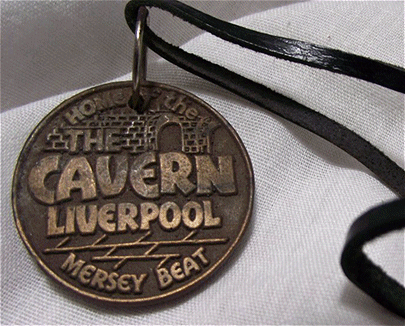 |
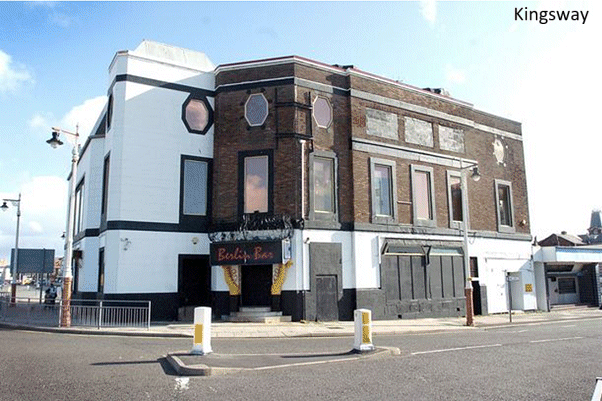 |
In 1962 Roy opened his own club Chequers and used to run Country Music nights
on Tuesdays with groups such as The Hillsiders, The Ranchers, The Blue Mountain
Boys and The Miller Brothers. Roy developed his club business and took over
The Iron Door club, which had been renamed The Pyramid. Then, in 1969 he
heard that Alf Geoghegan, the current Cavern owner, was thinking of selling
the club. Roy bought it off him. He writes, "Taking it over was quite daunting.
It was licensed for four hundred people and when it got eight hundred in,
it was packed! But we used to get sixteen hundred in and it was always impossible.
We had twelve doormen: we kept a row of chairs in the entrance to sit girls
on when they passed out." The club was proving exceptionally successful for Roy, but then: "I received a letter from the council informing me that I had eight weeks to vacate the premises as British Rail was taking it over. I got on to them and they informed me that they had written to The Cavern several times with the notifications. I presume mail had gone to the previous owner who kept stum! I managed to get a bit of a delay on the order and wrote to various celebrities like Cilla Black, The Beatles and others, and heard nothing." He adds, "The final night of The Cavern would be on Sunday May 27th 1973. In the days before The Cavern's last night, I was quoted in the Echo: 'It's going to be a sad and nostalgic occasion. I would like to see part of the cellar preserved as a tourist attraction. I think it could be done and would be worth the effort', but that plea too would fall on deaf ears." The destruction of The Cavern to make way for an air vent for the underground railway was an act of vandalism by the council of the time who not only didn't have any concept of the potential value of The Cavern for Liverpool's heritage, but they also disliked The Beatles. I suspect it was Pete Best, not Ringo Starr, when Roy banned the quartet at the door. When Ringo joined them in August 1962, they had dispensed with their leather gear. Also, when John used to go to The Basement with Arthur Ballard it was while he was still at the Art College and he left the college before The Beatles went to Germany in August 1960. Yankel held an exhibition of his paintings in London in 2003 and the painting which John had scored was exhibited, although Yankel refused to sell it, despite offers of up to £20,000. There is not a great deal about the actual music scene in the book, but it is an atmospheric voyage through the tough side of Liverpool's clubland, journeying with the numerous bouncers through violent episodes among the numerous clubs which sprang up during the 1960s. Also, don't expect any photographs of the Mersey music scene as the majority of illustrations depict muscle men and beauty queens. Roy's adventures continued after The Cavern closed, with him opening The New Cavern Club in Mathew Street, opposite the old, which later became Eric's, the home of a new wave of Mersey bands. Sixties City note: Roy Adams was the bouncer who worked his way up and onto the other side of the door - until he became Liverpool's 'King of Clubs'. He was the last owner of the original Cavern, looked after doors and ran nightclubs, dancehalls, restaurants and country clubs between 1957 and 1999. The former army guardsman also dabbled in professional high-diving and amateur wrestling, which is also chronicled in the book, but it is the stories of the days (but mostly nights) he spent in Liverpool's clubs which will provoke particularly strong memories for many Merseysiders. He knew the doors and dance floors of so many of the city's favourite venues, including The Harlequin, in Church Street; The Basement Club in Mount Pleasant; The Chequers Club in Seel Street; The Pyramid in Temple Street (where actress Sharon Maughan was, briefly, a barmaid) and the Gatsby, Revolution and Cavern in Mathew Street. Then there was The Chelsea Reach in New Brighton, Shorrocks Hill Country Club in Formby, Toad Hall in Ainsdale and The Kingsway in Southport. |
|
Article
Text
UK
web hosting by
|